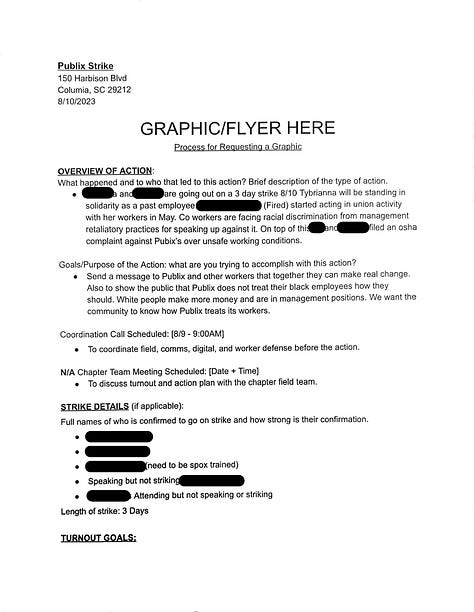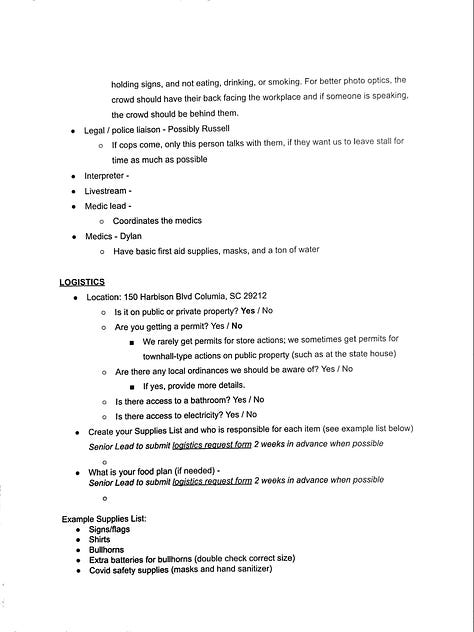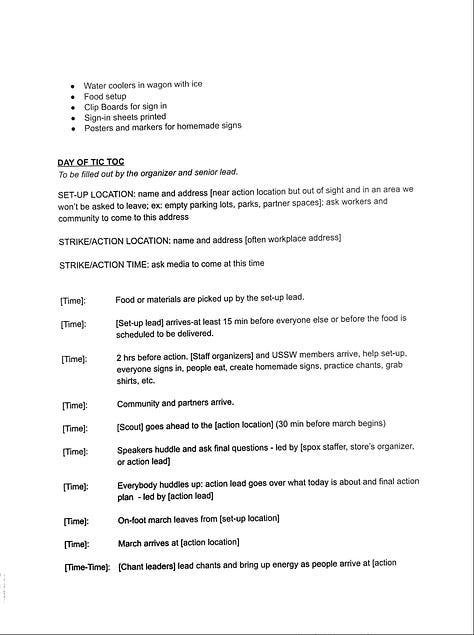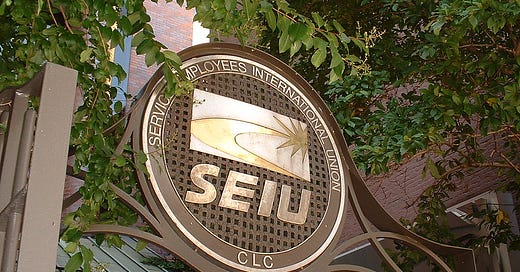SEIU's Union of Southern Service Workers Targets Employers With 'Guerrilla' Actions
The newly formed group has hit employers across the South with well-scripted "spontaneous" strikes.
The Union of Southern Service Workers (USSW)—which was formed in late 2022 by the Service Employees International Union (SEIU) to unionize service workers across the southern United States—has engaged in a number of protests over the summer, targeting several major brand-name employers, as well as at least one small business owner who likened the union’s tactics at her restaurants in Savannah as a ‘guerilla action.’
“Change the South…Change the Nation.” — USSW activists
“USSW is a continuance of Raise Up, the very active southern chapter of the Fight for $15 and a Union that formed in 2013 and took root in North Carolina,” Truthout reported in January, noting that the USSW is “a first-of-its-kind cross-sector union offering membership to fast food, retail, warehouse, care, and other service industry workers across North Carolina, South Carolina, Georgia, and Alabama.”
Since its founding, the USSW has been making its presence known by holding seemingly-spontaneous protests inside and outside establishments of major brands like Burger King, Dollar General, Publix and Waffle House, as well as smaller employers like cafes Foxy Loxy, Fox and Fig and Henny Penny in Savannah, Georgia.
This summer, the USSW paid organizing recruits $22 per hour to attend an eight-week organizing academy in Columbia, South Carolina for the purpose of sending the recruited activists back out to their jobs in order to agitate and organize.
Earlier this week, for example, USSW activists led two employees and one former employee of Publix in Columbia, South Carolina in a “strike” outside the store on Harbison Blvd.
Although the “strike” was reportedly going to last three days, on Saturday, a customer service employee at the Publix store confirmed that the store was unaffected by the protest.
While many of the alleged issues protesters accuse Publix being guilty of are already covered by agencies like the EEOC or OSHA, whether true or not, the union activists seem to be drawing attention to them as a reason a union is needed.
In July, more than a dozen USSW activists led four Waffle House employees in Columbia to “strike” a Waffle House on Garners Ferry Road. Like the Publix “strike,” the Waffle House protest, according to news reports, only involved four employees and more than a dozen union activists.
Targeting small employers
In late July, USSW activists and some workers of three cafes owned by Savannah entrepreneur Jen Jenkins held a protest inside the cafes, attempting to present management with a petition.
“We demand dignity and equal treatment and equal pay regardless of race, gender, immigrant status, age, sexual orientation or mental health disability,” the workers stated, according to WSAV.com. “Respect from management, an end to arbitrary suspensions, and we are demanding fair grievance processes.”
On August 5th, according to a statement by the cafes’ owner Jen Jenkins, 23 mostly part-time employees went on strike, with seven walking out of their shifts; the rest were not scheduled to work.
"We are saddened by the aggressive actions taken by the Southern Service Workers against our family business and the disruption caused by last weekend’s illegal action. Their decision to invade our premises and disrupt and demand employees walk off the job not only upset customers, many of whom were with their young children, but was also damaging to the wellbeing and income of the demonstrators’ coworkers.
A small faction of employees, most of whom are part time, chose to associate with the recently formed Southern Service Workers. We are extremely concerned that this group did not follow legal collective bargaining practices. We terminated nine employees who participated in these illegal actions.
So far, the USSW’s strike does not appear to have greatly impacted the cafes.
“We had a lot of folks volunteer to pick up shifts. We’ve had other folks volunteer to go to different cafés and help out as they can,” Julie Kaufman, Director of Operations for the cafes told WSAV.com. “Some people as they’ve gone home in the last couple of days have roommates that would like to come and apply for work at the cafés.”
Is the USSW more astroturf than grassroots?
Although the USSW’s efforts to appear to be an organic, grassroots movement, it is questionable whether that is actually the case.
The ratio of activists appearing at the protests compared to actual employees who are participating call into question the authenticity.
In fact, at least one of the USSW’s “strikers” may, in fact, be a “serial salt.”
Last August, Naomi Harris helped launch a five-day strike at a Columbia eatery called Mod Pizza.
“For the work that we do, we don’t get paid enough at all,” Naomi Harris, a MOD Pizza employee who, reported The State newspaper, helped organize last year’s strike. “We want to put an end to the racism and discrimination in the workplace.”
At July’s protest at Waffle House in Columbia, Naomi Harris was once again in the news, participating in the “strike.” This time, Ms. Harris was identified as a Waffle House employee.
At the Publix event this past week, one of the USSW participants left behind a multi-page event script on the sidewalk which detailed how planned out the event was, all the way down to printouts of Google maps of the targeted location and instructing protesters stay close together and not to eat or smoke during the protest for better photo ops.









Is the USSW using the SEIU’s Fight for $15 game plan?
While the USSW seems to be catching some employers by surprise, its tactics seem to be loosely modeled after its parent union, the SEIU’s decade-long Fight for $15 campaign.
In 2009, the SEIU developed its blueprint to unionize America’s fast-food industry, by using “a living wage as a vehicle to excite, build momentum, build worker lists/ID potential leaders and potentially support collective bargaining.”
Three years later, in 2012, the SEIU’s “Fight for $15 (and a union)” campaign was launched with a strike in New York City.
Over the next several years, the SEIU’s primary approach was the targeting of fast-food behemoths like McDonald’s with
Although the SEIU failed to unionize any fast-food chains through industry-wide organizing, it did succeed in establishing a nationaL conversation about raising the minimum wage.
Moreover, after spending upwards of $100 million on the Fight for $15 campaign, the SEIU through its subordinate union Workers United, changed its industry-wide organizing model to a store-by-store model and has succeed in unionizing more than 300 Starbucks stores.
Although the USSW’s goals include raising wages, its demands seem to be centered on uniting workers among social justice and equity issues.
Whether the USSW succeeds in its plan to unionize the South remains to be seen.
However, with a union like the SEIU and its deep pockets behind it, the ability to disrupt employers with ‘shock and awe’ protests and ‘guerilla’-like actions may become more prevalent.





